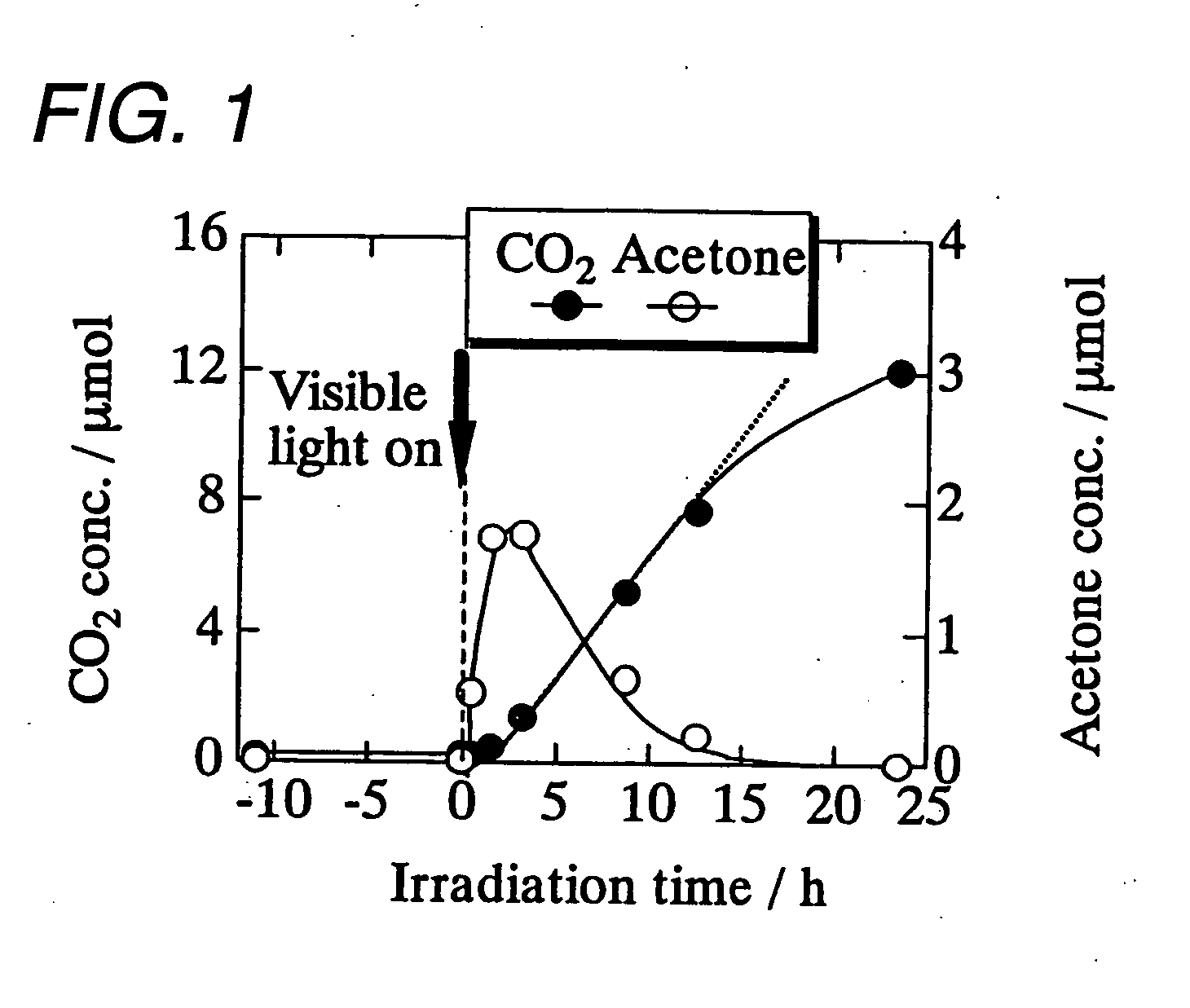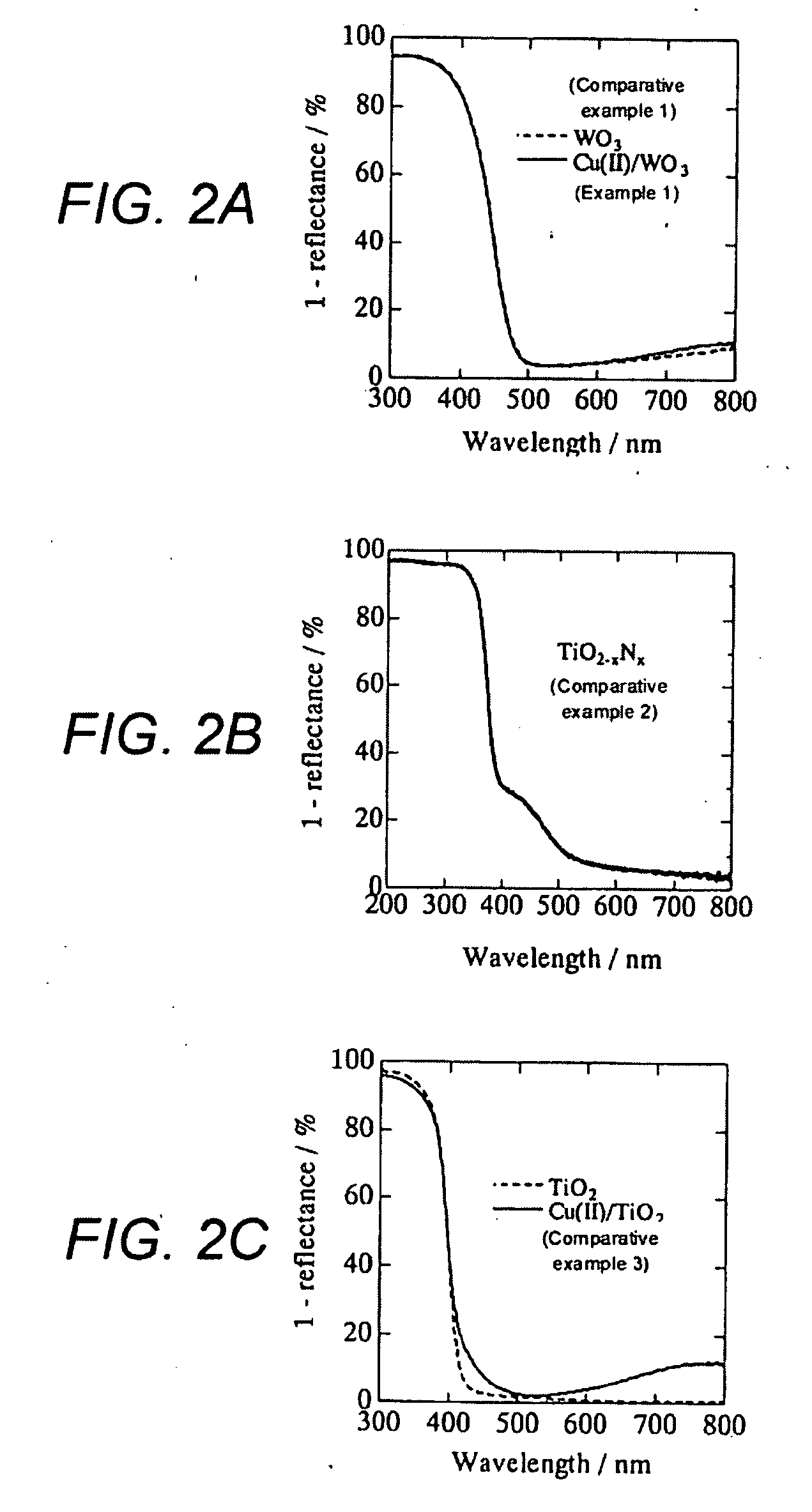Photocatalyst material, method for decomposition of organic material, interior member, air purification device, and apparatus for preparation of oxidizing agent
a photocatalyst and organic material technology, applied in physical/chemical process catalysts, metal/metal-oxide/metal-hydroxide catalysts, separation processes, etc., can solve the problem of not enabling photoexcited electrons to perform one-electron reduction of oxygen atoms, generating poorly oxidizing holes, and suppressing the photochromism of tungsten trioxide , the effect of strong oxidative decomposition activity
- Summary
- Abstract
- Description
- Claims
- Application Information
AI Technical Summary
Benefits of technology
Problems solved by technology
Method used
Image
Examples
example 1
[0041]WO3 powder (a mean particle diameter: 250 nm, available from Kojundo Chemical Laboratory Co., Ltd,) were filtered to eliminate particles each having a diameter of 1 μm or more, and then sintered for three hours at 650° C. in advance, in order to obtain tungsten trioxide microparticles.
[0042]The obtained tungsten trioxide microparticles was suspended in a distilled water (10% by weight: WO3 vs. H2O). Next, 0.1 percent by weight (Cu(II) vs. WO3) of CuCl2. 2H2O (available form Wako Pure Chemical Industries, Ltd.) was added to the suspension, then heated up to 90° C. while stirred, and subsequently retained for one hour. Next, the obtained suspension was filtered by means of a suction filtration. Then, the obtained residue was washed with a distilled water, and subsequently heat-dried at 110° C., so as to obtain a sample of tungsten trioxide microparticles each carrying on its surface a divalent copper salt.
[0043]The obtained tungsten trioxide microparticles carrying divalent copp...
example 2
[0044]A sample of the tungsten trioxide microparticle carrying thereon divalent copper salt was obtained in almost the same way as in Example 1. But, WO3 powder was not sintered in advance, in order to obtain the sample of tungsten trioxide microparticle in this example.
PUM
| Property | Measurement | Unit |
|---|---|---|
| Fraction | aaaaa | aaaaa |
| Percent by mass | aaaaa | aaaaa |
Abstract
Description
Claims
Application Information
 Login to View More
Login to View More - R&D
- Intellectual Property
- Life Sciences
- Materials
- Tech Scout
- Unparalleled Data Quality
- Higher Quality Content
- 60% Fewer Hallucinations
Browse by: Latest US Patents, China's latest patents, Technical Efficacy Thesaurus, Application Domain, Technology Topic, Popular Technical Reports.
© 2025 PatSnap. All rights reserved.Legal|Privacy policy|Modern Slavery Act Transparency Statement|Sitemap|About US| Contact US: help@patsnap.com


